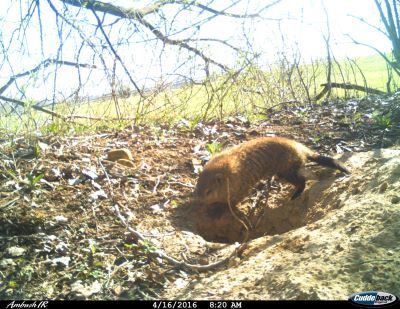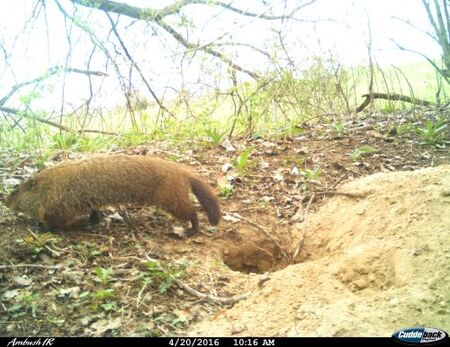
Kane County Celebrates Its Largest Squirrel
On Groundhog Day, Kane County is celebrating its largest squirrel, also known as the woodchuck or whistle pig, and how it helps its ecosystem in several ways.
“Abandoned groundhog burrows often provide homes for animals such as skunks and red foxes that in turn feed on mice and insects which can harm agricultural crops," said Barb McKittrick, Environmental Education Manager for the Forest Preserve District of Kane County. “The burrowing activities of groundhogs help to improve soil health by aerating the soil and bringing subsoil nutrients to the surface," she added. “Finally, groundhogs serve as food for predators such as coyotes, foxes, hawks, and eagles."
McKittrick said groundhogs are native to Kane County and can weigh up to 15 pounds. One interesting fact about them is that their teeth never stop growing!
“Like all rodents, groundhogs have four chisel-shaped incisors, two on the top and two on the bottom; the upper incisors continually grow and need to be whittled down by the groundhog's constant chewing."
Even though they spend most of their time underground and are one of the few species in Kane County that truly hibernates according to McKittrick, they are also capable of swimming and climbing trees. Pet owners, however, don't need to worry about any encounters with their four-legged furry friends.
“Groundhogs are solitary, cautious animals and eat a primarily vegetarian diet, with the occasional insect or twig thrown in for good measure," McKittrick said. “Unless you keep insects as pets, your pets have little to fear from groundhogs."
 Fortunately, the groundhog population also has remained stable over the years despite growth and development in Kane County, and has adapted to its changing habitat. Unfortunately, groundhogs also can become a nuisance to residents and McKittrick offers several tips to deter them from helping themselves to “tasty garden produce":
Fortunately, the groundhog population also has remained stable over the years despite growth and development in Kane County, and has adapted to its changing habitat. Unfortunately, groundhogs also can become a nuisance to residents and McKittrick offers several tips to deter them from helping themselves to “tasty garden produce":
• Install fencing around the garden.
• Sprinkle strong-smelling substances (pepper, blood meal, hot pepper puree, garlic juice) around the edge of the garden.
• Trim grasses and plants surrounding the garden to make less suitable habitat for groundhogs.
• To keep groundhogs from moving into vacant burrows, cover any entrance holes in nearby abandoned animal tunnels.
In addition, McKittrick said groundhogs can excavate burrows up to six feet deep and 30 feet long underneath structures such as sheds, porches or front yards. She recommends fencing, rocks or pavers as a way to “impede a groundhog's ability to burrow on your property."
Finally, despite the benefits to our local ecosystem, McKittrick said some residents consider groundhogs as “vermin" whose population should be controlled or eradicated.
“Extreme eradication measures include poisoning, which can lead to exposure of unintended targets, including pets, children and other wildlife. By taking steps to discourage groundhogs from digging on our property and munching on our gardens, we can coexist with groundhogs and respect their niche in the ecosystem."

